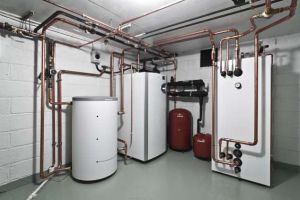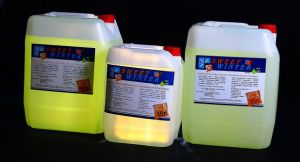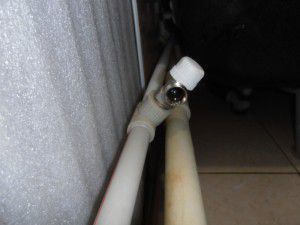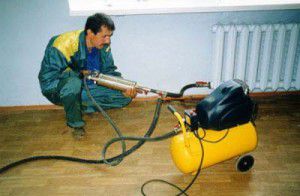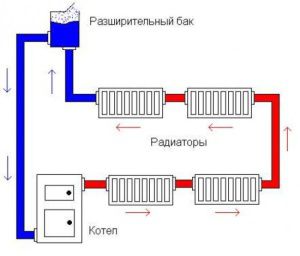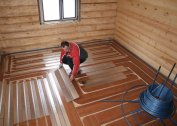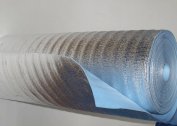The operation of the heating system is a well-coordinated mechanism, the reliability and effectiveness of which depends on its components. The main one is the coolant - a liquid that ensures the transfer of thermal energy from the boiler to the house. To do this, you need to correctly fill the closed heating system with water or coolant. What is the specificity of this procedure and how to do it correctly?
Fluid change intervals
During the heating season, even initially high-quality coolant gradually loses its properties. This is due to a periodic change in its temperature, as a result of which precipitate is released (for water) or a change in the viscosity of the substance (synthetic coolants). If the heating system is not filled in time with coolant, the following negative points may occur:
- Reduced efficiency in heating. This is a consequence of a decrease in the heat transfer efficiency due to the presence of external elements in the liquid - lime sediment and rust.
- The likelihood of failure of the heating boiler, radiators and valves. Only by filling the heating medium with the heat carrier can such problems be avoided. This is due to the gradual saturation of water with oxygen, resulting in increased foaming and significantly accelerated corrosion processes on the inner surface of the steel elements of the system.
Timely filling of a closed heating system with water can be different in time. It all depends on the composition of the coolant and the temperature of the boiler. For distilled water, the optimal replacement interval is 1 year, i.e. before each heating season. In the case of using coolants based on ethylene glycol, propylene glycol or glycerol, the service life is from 3 to 7 years. It depends on the concentration of chemical components - the more they are in the total volume, the longer the liquid will serve.
However, before filling a closed heating system with water, you need to determine the type of coolant - it will be ordinary H2O or advanced fluids.
In order to fill in or add antifreeze to the heating system of a double-circuit boiler, you need to find out if this can be done. Boiler manufacturers indicate solutions with which to fill the heating system.
Water or coolant: choose the optimal filling system
The optimal composition of the liquid should be determined by the parameters of the heating system. Often the heating system is filled with water, as it has a number of significant advantages. Affordable is the determining cost - often they take plain tap water. However, this is fundamentally wrong. A large number of metal and alkali elements will contribute to the formation of growth on the inner walls of pipes and radiators. This leads to a reduction in bore diameter, an increase in hydraulic losses in individual sections of the highway.
But how to properly fill a closed heating system with water to avoid such troubles? Experts recommend the use of distilled water. It is maximally cleared of impurities, which affects for the better its physical and operational properties.
- Energy intensity.Water well accumulates heat, so that later it can be transferred to the room;
- The minimum viscosity index. This is important for closed heating systems with forced circulation and affects the power of a centrifugal pump;
- With increasing pressure in the pipes, the boiling point shifts upward. Those. in fact, the transition from liquid to gaseous state occurs at a temperature of 110 ° C. This makes it possible to use high-temperature heating modes.
But if there is a probability of exposure to negative temperatures, then water, as a liquid for filling heating systems, is unacceptable. In this case, antifreezes should be used, in which the crystallization threshold is much lower than 0 ° C. The best option is propylene glycol or glycerol solutions with special additives. They belong to the class of harmless substances and are used in the food industry. Ethylene glycol based solutions have the best technical qualities. Until recently, they were filled with closed heating systems. However, they are extremely harmful to humans. Therefore, despite all their positive qualities, it is not recommended to use ethylene glycol-based antifreezes.
But what can fill the heating system with - water or antifreeze? If there is no likelihood of exposure to low temperature, water is the best choice. Otherwise, it is recommended to use solutions of a special coolant.
Car antifreeze must not be poured into the heating system. This will lead not only to a breakdown of the boiler and failure of the radiators, but will also be hazardous to health.
Water drain technology, heating pipe cleaning
Before filling the heating system of the double-circuit boiler, it is necessary to drain the old coolant. This procedure is mandatory and, despite its apparent simplicity, should be performed according to a specific technological scheme. First you need to turn off the heating and wait until the water temperature drops to room temperature. Only then can the closed heating system be properly filled with distilled water.
Then the drain valve located at the lowest point of the system opens. After waiting for the water to drain, you need to open the Mayevsky crane, which is located at the top of the circuit. This is necessary to stabilize the pressure in the pipes. After completing these tasks, flush the system. This is done before the heating system in a private house is filled. To do this, use special tools and equipment. A pump is connected to the heating circuit, which pumps the flushing fluid into the heating system. It also acts destructively on deposits in pipes. After several cycles of passage, the contaminants are removed along with the liquid.
Used liquid must not be drained into the sewer system. It should be collected in sealed containers, which are subsequently disposed of by special companies.
Filling methods - built-in mechanism and pumps
How to fill the heating system in a private house - using the built-in connection to the water supply using a pump? It directly depends on the composition of the coolant - water or antifreeze. For the first option, it is enough to do a preliminary flushing of the pipes. Instructions for filling the heating system consists of the following items:
- It is necessary to make sure that all shut-off valves are in the right position - the drain valve is closed as well as safety valves;
- The Maevsky crane at the top of the system should be open. This is necessary to remove air;
- Water is filled until water flows out of the Mayevsky tap, which was opened earlier. After that it overlaps;
- Then it is necessary to remove excess air from all heating appliances.They should have an air valve installed. To do this, leave the filling valve of the system open, make sure that air escapes from a particular device. As soon as water flows from the valve, it must be shut off. This procedure needs to be done for all heating appliances.
After the filling of the water in the closed heating system, the pressure parameters must be checked. It should be 1.5 bar. Further, to prevent leakage, pressing is performed. About it will be said separately.
Filling heating with antifreeze
Before you begin the procedure for adding antifreeze to the system, you need to prepare it. Usually use 35% or 40% solutions, but to save it is recommended to purchase a concentrate. It should be diluted strictly according to the instructions, and only using distilled water. In addition, you must prepare a hand pump to fill the heating system. It is connected to the lowest point of the system and, using a hand piston, the coolant is pumped into the pipes. During this, the following parameters must be monitored.
- Air outlet from the system (Mayevsky crane);
- Pressure in the pipes. It must not exceed 2 bar.
All further procedure is completely similar to the above. However, it is necessary to take into account the features of the operation of antifreeze - its density is much higher than that of water. Therefore, special attention should be paid to calculating the power of the pump. Some glycerol-based formulations can increase the viscosity coefficient with increasing temperature.
Before pouring antifreeze, it is necessary to replace the rubber gaskets at the joints with paronite ones. This will greatly reduce the likelihood of leaks.
Automatic filling system
For double-circuit boilers, it is recommended to use an automatic filling system for the heating system. It is an electronic control unit for adding water to the pipes. It is installed on the inlet pipe and works fully in automatic mode.
The main advantage of this device is the automatic maintenance of pressure by the timely addition of water to the system. The principle of operation of the device is as follows: a pressure gauge connected to the control unit gives a signal of a critical decrease in pressure. The automatic water supply valve opens and remains in this state until the pressure has stabilized. However, almost all devices for automatically filling the heating system with water have a high cost.
A budget option is to install a check valve. Its functions are completely similar to the automatic filling system of the heating system. It is also mounted on the inlet pipe. However, the principle of its operation is to stabilize the pressure in the pipes with a water recharge system. When pressure drops in the line, the pressure of tap water will act on the valve. Due to the difference, it will automatically open until the pressure stabilizes.
In this way, you can not only fuel the heating, but also carry out a full filling of the system. Despite the apparent reliability, it is recommended to visually control the flow of coolant. When filling the heating system with water, the valves on the devices must open to exit the excess air.
Pressing heating system
Before filling the heating system with coolant, it is necessary to check the tightness of all joints and connections. To do this, pressing is performed - creating excess pressure in the pipes, i.e. a situation of system destabilization is artificially created.
This can be done in two ways - by means of air injection or coolant. This is necessarily done even before the heating system of the dual-circuit boiler is filled.This procedure can be carried out using a mechanical (electric) pump or by connecting a water supply. The latter option is not recommended, since it will be very difficult to control the process. The order of execution is as follows:
- Preliminary visual inspection of joints and connectors;
- Connection of the mechanism to the inlet pipe of the system;
- The creation of excess pressure, the value of which should exceed the norm by 1.5 times.
Be sure to check the condition of the heating elements. In the event of a leak, the process stops immediately and can only begin when the defect has been repaired.
Heating filling quality control
Before filling a closed heating system with water, make sure that all protective elements are present. These include Mayevsky cranes, bypasses, and control devices - thermometers and manometers. They are necessary not only to control the pressure in the pipes during the supply of the coolant, but also are the main safety measures during heating operation. This is how you can properly fill the heating radiator with water.
During the correct filling of a closed system with water, the following parameters must be monitored:
- Pressure. Pressure gauges must be installed in key places of the system - extreme radiators, and the highest point. After the final air outlet, the pressure on all gauges should be the same;
- No leaks.
Only in this way can a stable pressure be achieved. However, the main verification process occurs when the boiler is turned on. The thermal expansion of water at maximum operation should not affect the integrity of the piping of the heating elements.
Open heating system
If an open heating system is being filled in a private house, the order of work is somewhat different. The peculiarity is that the pressure in the pipes is equal to atmospheric. Therefore, the main control element is an expansion tank installed above the rest of the heating devices.
In this case, the procedure for filling the heating system is as follows:
- The old coolant is drained and the pipes are cleaned.
- On all heating devices, a Mayevsky tap is opened.
- The flow of fluid to fill the heating system can be carried out through the return pipe.
- As soon as all air leaves the system, the water level in the expansion tank is checked. It should be filled in 2/3.
It is noteworthy that with the help of a hand pump used to fill the heating system, you can add coolant.
For an open heating system, overpressure is not allowed. Otherwise, it may lead to improper temperature operation.
How to add coolant
In addition to instructions for filling the heating system, you must know the correctness of the procedure for adding coolant. This situation may occur 2 or 3 times during the heating season. It is important to determine in time that the volume of water has fallen below critical. Depending on the type of heating, there are different procedures for filling the heating system.
Closed heating system
The main indicator is a decrease in the pressure level in the pipes. For timely monitoring, several pressure gauges are installed in the system. One of them is necessarily located immediately after the hot coolant exits the boiler. A pressure gauge should also be installed on the upper air valve. The pressure drop in the system is a consequence of 2 factors - the occurrence of an emergency (leakage) or the natural evaporation of a liquid. If this process occurs very quickly, a pipe break has most likely occurred. A gradual decrease in pressure indicates a second factor.
The method of adding liquid completely repeats the procedure for filling with water any closed heating system. To do this, you can use hand pumps to fill the heating system (antifreeze), or use the connection to the central water supply.
Open heating system
Filling an open heating system with water is recommended through an expansion tank. This can be done even at a relatively high temperature of the water in the pipes. This method has several advantages - control of the coolant level in the system during pouring and improved circulation due to the difference in water density.
There is a risk of failure of the boiler or heating radiators if additional filling of the open heating system with coolant occurs when the boiler is running. Therefore, this procedure is recommended to be performed when water reaches the room temperature pipes.
To select antifreeze, we recommend that you familiarize yourself with the video material.
